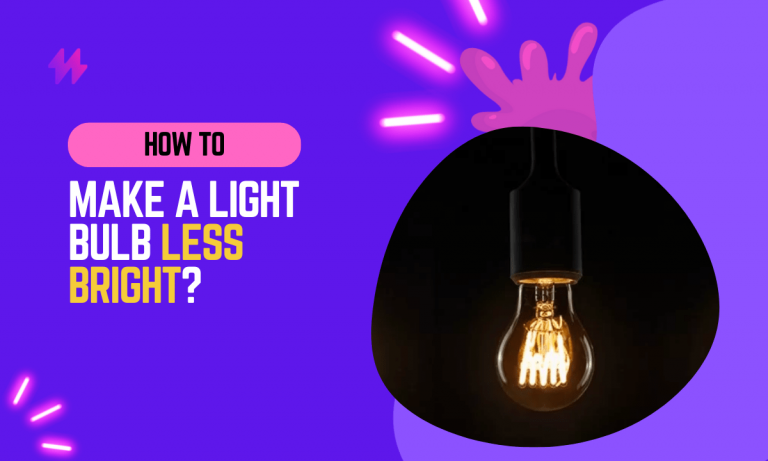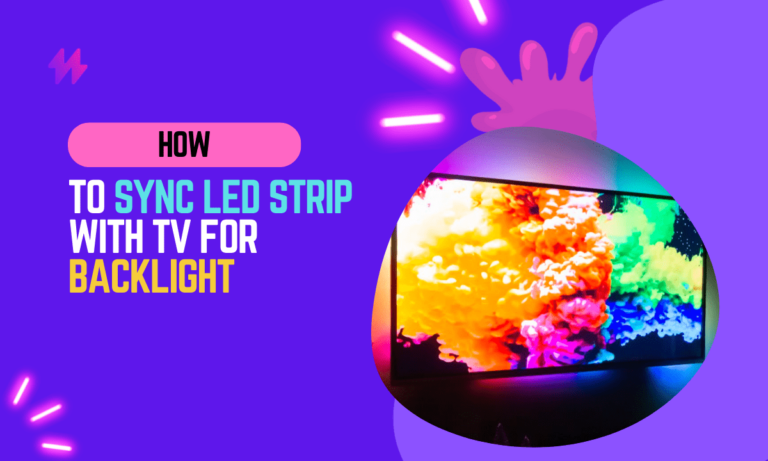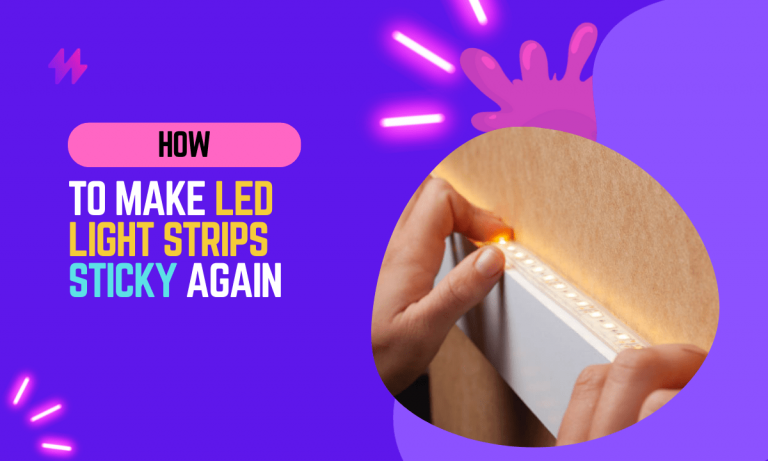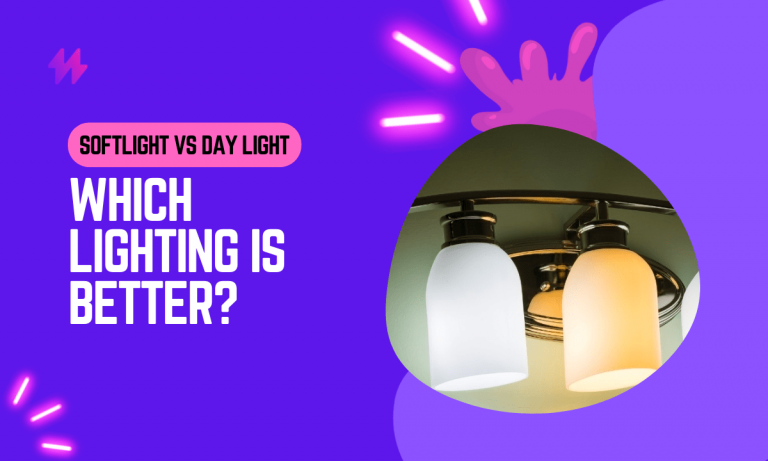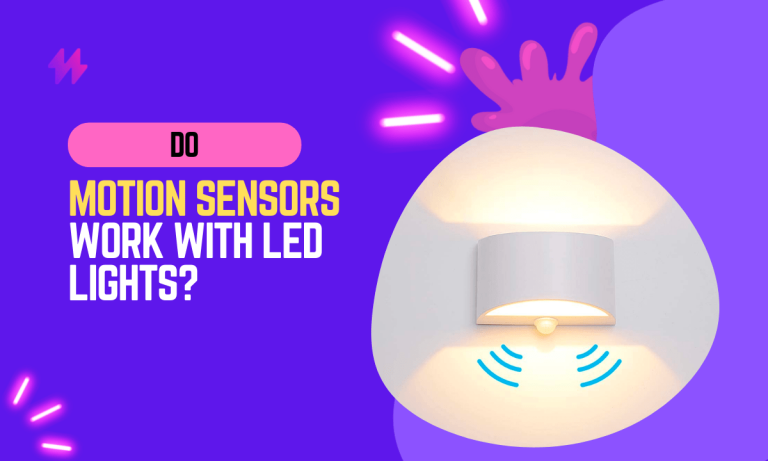How to Make LED Lights Turn on When Door Opens
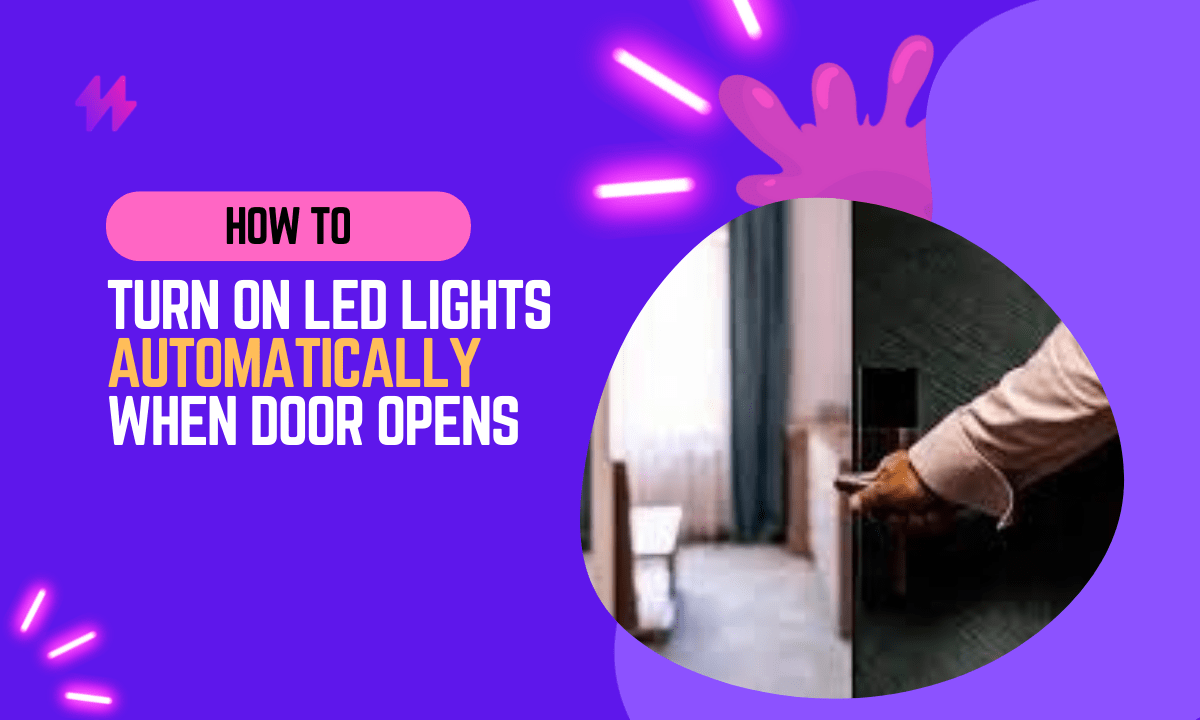
If you’re like most people, you probably don’t think much about the door. You open it when you need to go in or out, and that’s pretty much the end of it. But what if there was more to your door than meets the eye? What if you could use it to make your life a little easier?
Well, believe it or not, there is a lot more to your door than meets the eye. You can use it to automate your LED lights, making them turn on when you enter the room.
In this blog post, we’ll discuss how to make led lights turn on when door opens. We will also provide tips for choosing the right LED lights and door sensors. Keep on reading!
Your door can serve as a gateway not only for entering and exiting but also for enhancing your lifestyle through smart technology. By integrating motion sensor lights with your doors system, you can ensure that your lights switch on automatically, providing convenience and efficiency as you move through your home.
Top 5 Benefits of Automating Your LED Lights for Enhanced Home Convenience
There are numerous benefits to automating your LED lights, including:
Automating your LED lights can significantly optimize the functionality of various light fixtures, enhancing the ambiance of different areas in your home. For instance, home theater owners can install recessed lights that respond to door jamb switches, ensuring the right lighting when entering a dimmed room, making it more enjoyable for movie nights.
- Convenience: No longer do you have to fumble for the light switch in a dark room. Your lights will automatically turn on when you enter the room.
- Efficiency: Automation can help save energy by only turning on the lights when they’re needed and turning them off when they’re not in use.
- Improved safety: The automatic lighting turns on before you even enter the room, making it easier for you to navigate and reducing the possibility of accidents or tripping hazards in dark rooms.
- Enhanced security: Automatic lighting can deter intruders as any movement will trigger the lighting to turn on, potentially alerting you to their presence.
- Increased home value: Automation is a sought-after feature in homes, making your property more attractive to potential buyers.
Essential Tools for Automating Your LED Lights: What You’ll Need
In order to automate your LED lights, you will need:
To effectively integrate your door system with advanced lighting solutions, consider the placement of your light switch near the entrance. Utilizing technology such as tape lights and puck lights, you can create a dynamic lighting design that complements your bifold doors while enhancing the overall functionality of your smart home appliances.
- LED lights: Make sure they are compatible with the automation system you plan on using
- Door sensors: These detect when the door opens and closes and send signals to turn on or off the lights
- Automation system: This could be a smart home hub or app that allows you to control and connect all of your devices
- Motion sensors (Optional): These can also turn on the lights as you enter a room, in addition to the door sensor.
Automating LED Lights: Process to Make Them Turn On When Door Opens
- Install your LED lights and door sensors. Make sure they are all compatible with the automation system you’re using.
- Connect the lights and door sensors to the automation system, following instructions provided by the manufacturer.
- Test out the automation by opening and closing the door to see if it triggers the light to turn on or off. Make any necessary adjustments before finalizing the setup.
- Enjoy the added convenience and efficiency of automating your LED lights!
Exploring Types of LED Lights for Automation: How to Make LED Lights Turn On When Door Opens
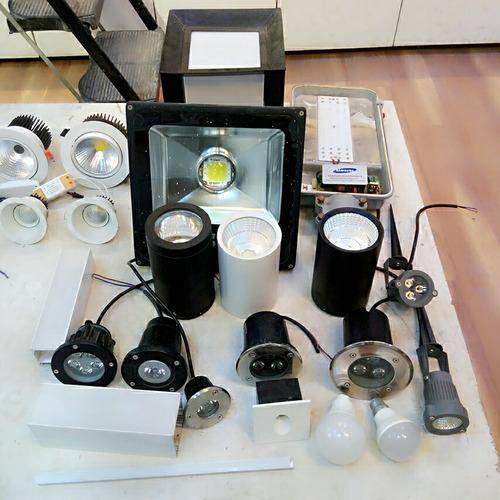
Almost any type of LED light can be used in automation, including ceiling lights, wall sconces, and even strip lights. Make sure to choose energy-efficient LED lights for added efficiency benefits.
Incorporating dome lights in your home can significantly enhance the functionality and design of your spaces, especially in areas like hallways and closets. By using regular door systems equipped with normally open contacts, you can create a seamless experience where your lights turn on automatically as the door opens, ensuring you benefit from both natural light and efficient electricity usage.
- Puck Lights
- LED Strip lights
- Battery-Operated Lights
- Motion Sensor Lights
Selecting the Right Door Sensors for LED Automation
When selecting door sensors, consider factors such as the range of the sensor (how far away it can detect movement), wireless connectivity, battery life, and design. Make sure it is also compatible with your automation system.
Enhancing the light design in your home can be achieved by using LED strips installed along doorframes, particularly in areas like hallway closets. Additionally, implementing door mount solutions with surface mount doors can optimize your wiring setup and ensure that your light turns on as soon as the door opens, maximizing convenience and safety.
Conclusion: Key Takeaways on Automating Your LED Lights
In conclusion, integrating LED lights to turn on automatically when a door opens combines convenience with energy efficiency, enhancing the functionality of both residential and commercial spaces. This setup not only improves the safety by illuminating entry areas but also adds a modern touch to the environment. To achieve this, one effective method involves using a magnetic switch or a contact sensor that triggers the LED lights. These sensors are installed at the door frame and the door itself; when the door opens, the circuit completes and signals the LEDs to light up. This system is particularly beneficial in storage areas, closets, and entrance halls where manual light control can be cumbersome.
Moreover, for those interested in smart home technologies, integrating these systems with broader home automation networks can further enhance their utility. Connecting the LED setup to a smart home hub allows for greater control, such as setting timers or linking the lights to other automated actions within the home. For example, lights can be programmed to only activate during specific hours, or to turn off automatically when the door closes, thereby saving energy. Additionally, advanced setups can send notifications to your smartphone when the lights are triggered, adding a layer of security by alerting you to movements at the door. With the right tools and a bit of planning, installing a door-activated LED lighting system can be a straightforward and rewarding project that significantly boosts the convenience and safety of your living or working environment.
How To Make LED Lights Turn On When Door Opens | Understanding the Mechanism of Door Sensors
Understanding the mechanism of door sensors is crucial for effectively learning how to make LED lights turn on when a door opens. These sensors typically utilize motion detection technology, such as passive infrared or magnetic switches, to recognize the movement associated with an opening or closing door. By integrating these sensors with lighting solutions like LED lighting strips, users can create an automated ambiance that activates upon entry. Utilizing stick switches can further enhance this automation, allowing for seamless control without manual intervention. Mastering how to make LED lights turn on when door opens provides both convenience and an upgraded aesthetic to any space.
How to Make LED Lights Turn on When Door Opens | How Door Sensors Detect Motion
Door sensors play a crucial role in automating LED lighting systems. They operate by detecting changes in their environment, such as the opening or closing of a door. This mechanism often involves infrared or microwave technology that senses motion or the presence of an object. Understanding how these sensors detect motion is vital for effectively setting up a system that activates lights precisely when a door is opened. This knowledge is an essential step in learning how to make LED lights turn on when door opens.
The integration of door sensors with LED lights allows for a seamless lighting experience. By connecting the sensors to the LED system, users can ensure the lights illuminate immediately upon door activation. This setup often involves a relay or smart home controller that bridges the sensor’s output to the LED lighting circuit. Knowing how to make LED lights turn on when door opens can enhance the convenience of your home, providing both safety and energy efficiency.
Integrating Sensors with LED Lights
Integrating sensors with LED lights requires a clear understanding of the specific components needed for the setup. Sensors detect the presence of motion triggered by the opening of a door. This motion data signals the LED lights to turn on. To achieve the desired effect and ensure a seamless operation, one must carefully choose sensors that are compatible with the LED lights. The goal is to create a system that effectively responds to the door’s movement, fulfilling the objective of how to make LED lights turn on when door opens.
Another essential aspect involves proper configuration and installation of the sensor and LED system. The placement of the sensor plays a critical role in detecting the door’s motion accurately. Aligning the sensor correctly ensures that it can effectively pick up movement, allowing the LED lights to illuminate instantly as the door opens. Understanding how to make LED lights turn on when door opens can enhance both convenience and safety within a home, providing immediate lighting in spaces that might otherwise be dark.
Wiring Your LED Lights for Automation
Proper wiring is critical for ensuring your LED lights activate reliably when the door opens. Understanding how to make LED lights turn on when the door opens involves connecting the sensors and lights in a safe and efficient manner. Focusing on safe wiring practices can prevent short circuits and other electrical hazards. Selecting the right power supply for your LEDs is equally important, as it ensures that the lights receive adequate voltage without causing damage. Mastering these aspects of wiring will set a solid foundation for automating your lighting system.
Safe Wiring Practices for LED Automation
Proper wiring is essential for ensuring that your LED lights operate effectively when triggered by door sensors. Understanding how to make LED lights turn on when door opens requires careful attention to wiring techniques. Use high-quality wires that match the power requirements of your LEDs to prevent overheating and ensure a safe connection. It is advisable to run separate circuits for different components to reduce interference and maintain consistent performance.
Testing your setup should be a priority before finalizing any installations. Check connections to ensure they are secure and insulated against accidental contact. Knowing how to make LED lights turn on when door opens involves ensuring that all wiring is free from damage and installed in accordance with local electrical codes. By adhering to these practices, you can enhance safety and reliability in your automation project.
Choosing the Right Power Supply for Your LEDs
Selecting the appropriate power supply is crucial for ensuring your LED lights operate efficiently and effectively. Understanding the voltage and current requirements of your LED strips or bulbs is essential. Finding a power supply that matches these specifications will prevent issues like flickering or even damage to the lights. This is particularly important in projects focused on automation, such as learning how to make LED lights turn on when the door opens.
Considering the wattage capacity of the power supply is equally important. A power supply that is underpowered can lead to performance issues over time. Opting for a supply with a little extra wattage capacity can allow for future expansions or additions to your system. This ensures reliability and longevity in your setup when you explore how to make LED lights turn on when door opens, creating a seamless experience.
Programming Your LED Light System
Programming your LED light system effectively enhances the convenience of your home automation. To understand how to make LED lights turn on when the door opens, it is crucial to integrate appropriate smart devices that can communicate with the sensors. Begin by selecting a reliable smart hub that can manage the signals from your door sensors and send commands to your LED lights. This setup not only ensures seamless operation but also allows for customization of the response time and brightness of the lights. Exploring the various home automation apps available can greatly simplify the process and help you establish the desired settings for your LED system.
Steps to Set Up Automation with Smart Devices
Setting up automation with smart devices involves a few straightforward steps to effectively control your LED lights. Begin by selecting a compatible smart door sensor that will detect the opening of the door. This device should be integrated with your existing smart home ecosystem, allowing for seamless communication between the sensor and your LED lights. Understanding how door sensors detect motion is crucial in this phase, as it informs how you can optimize the performance of your LED lights.
Once you have installed the sensor, it’s essential to connect it to a smart hub or app that supports automation. This will enable you to set specific commands, such as instructing your LED lights to turn on immediately when the door opens. Learning how to make LED lights turn on when the door opens becomes easier with a user-friendly interface that guides you through the configuration process. By customizing these settings, you can enhance the functionality and convenience of your home lighting system.
Using Home Automation Apps for Custom Settings
Home automation apps provide a user-friendly interface for customizing your LED lighting system. With a few taps on your smartphone, you can easily program the settings needed for your lights to activate. Understanding how to make LED lights turn on when the door opens becomes straightforward with these apps. They allow you to fine-tune the sensitivity of the door sensors and adjust the timing of the lights, ensuring that your setup works seamlessly.
These applications often come with pre-set configurations that can serve as a helpful starting point. Users can quickly explore features that allow for integration with other smart devices. Learning how to make LED lights turn on when the door opens can be enhanced by utilizing these advanced options, enabling automated routines and customized triggers. Ultimately, this technology provides a flexible solution to create a personalized smart home experience.
Troubleshooting Common Issues
Identifying issues with LED lights that fail to turn on when a door opens involves checking both the sensors and the wiring. Common problems include misaligned door sensors that fail to detect motion effectively. It’s essential to assess the positioning of your sensors to ensure they receive the necessary input for how to make LED lights turn on when door opens. Wiring errors, such as loose connections or incorrect voltage supply, can also hinder functionality. Regular maintenance and careful troubleshooting can help resolve these discrepancies, ensuring a seamless experience in automating your lighting system.
Diagnosing Sensor Malfunctions
Sensor malfunctions can lead to frustrating situations, especially if you rely on automation for convenience. If your lights fail to activate as expected, it could be due to a misalignment of the sensor. Checking the placement of the sensor in relation to the door can help establish whether it effectively detects motion. Proper positioning is crucial to ensure a reliable response when figuring out how to make LED lights turn on when door opens.
Another common issue may arise from electrical interference or faulty wiring. Inspecting the connections and ensuring the sensor is receiving power can often resolve the problem. Testing the sensor with a multimeter can help determine if it’s functioning correctly. Addressing these potential issues is essential for successfully implementing how to make LED lights turn on when door opens.
Resolving LED Response Delays
LED response delays can often stem from improper sensor calibration. Ensuring that the door sensor is correctly aligned and at the right sensitivity level can significantly enhance performance. Regularly testing the sensor will help determine if adjustments are necessary. This is crucial for understanding how to make LED lights turn on when door opens, as any misalignment can lead to delayed activation.
Interference from other devices may also contribute to response delays. Wireless signals from nearby electronics can disrupt the communication between the sensors and the LED system. Identifying potential sources of interference and relocating them can improve responsiveness. Maintaining a clear signal path is essential for achieving seamless automation and mastering how to make LED lights turn on when door opens.

